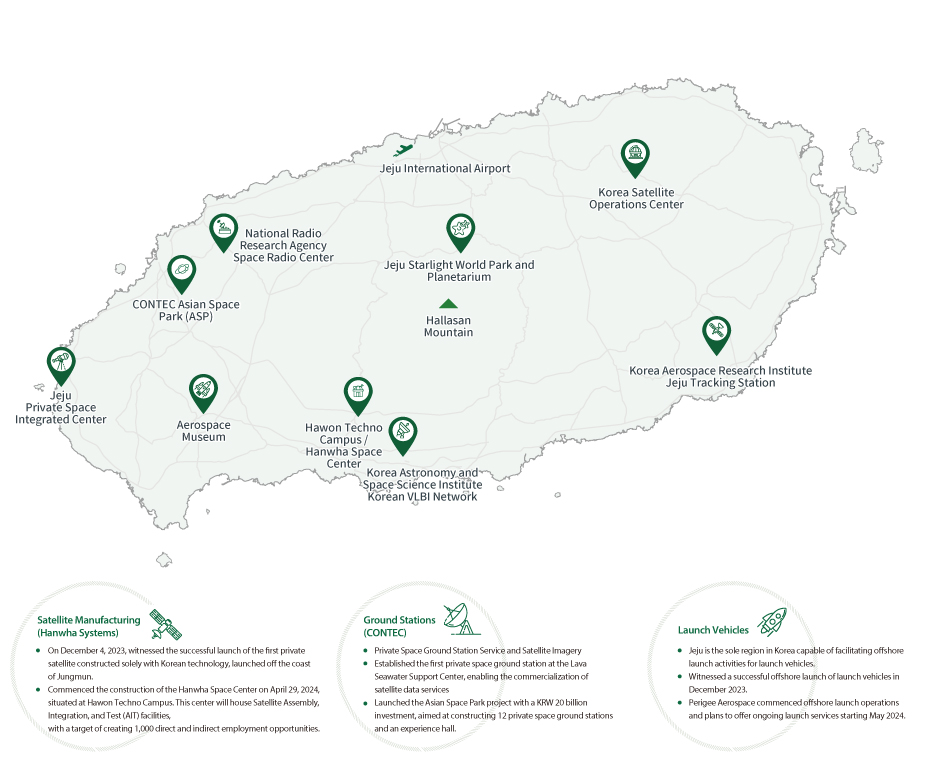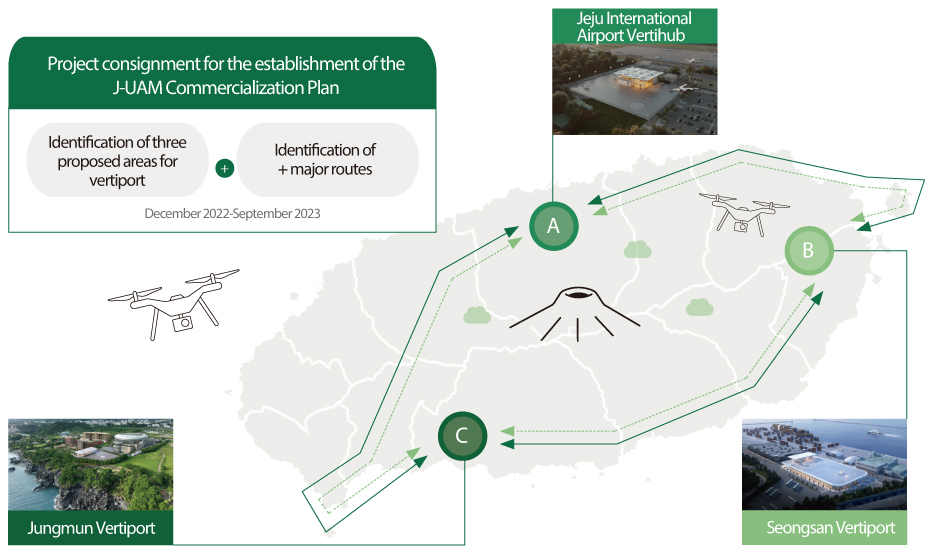Future Mobility
- Home
- Investment Environment
- Promising Industries
- Future Mobility
Private Space Industry
Jeju Island’s advantageous location near the equator, coupled with minimal radio interference and aerospace restrictions, and the presence of the Korea Satellite Operations Center, position it as an ideal hub for pioneering private space endeavors.
To streamline this effort, Jeju implemented “Jeju-Style Space Industry Development Strategies 5”.
To streamline this effort, Jeju implemented “Jeju-Style Space Industry Development Strategies 5”.
Five Strategies for Jeju-Style Space Industry Development
- Establish the J-Space Governance System
- Create the Space Ecosystem
- Nurture the Space Industry
- Build the Private Space Infrastructure
- Industrialize the Space Experience
Private Space Companies based in Jeju
- Perigee Aerospace
- CONTEC
- IOPS
- SIIS
- Hanwha Systems
Business and Investment Attraction Focus
Jeju aims to draw in businesses specializing in small launch vehicles, ground station services, and satellite manufacturing, with the goal of fostering a comprehensive value chain for the private space industry.
Overview of Aerospace Institutes and Facilities in Jeju

Korea Satellite Operations Center

Jeju Tourist-Focused Urban Air Mobility (J-UAM)
Jeju’s introduction of UAM is poised to address transportation challenges while also presenting a novel model intertwined with tourism, a cornerstone industry of the island. As a result, Jeju is actively advancing various forward-thinking projects in this realm.
J-UAM's strengths and utilities
Strengths in Jeju- Ample demand: High tourist demand, with a turnout of more than 10 million as the largest tourist destination in Korea/ Great transportation options to Jeju Global Education City, plus easy access to convention centers, golf courses, and more
- Environmental advantage: Public spaces with little limitation (e.g., fewer military facilities, one airport) and surrounded by ocean → Advantageous in terms of UAM skyway expansion
Potential for Utilization in Jeju
- Introducing a new mode of transportation via the sky, minimizing constraints on road expansions.
- Enhancing emergency medical transport to ensure timely access to medical care, complementing the existing helicopter transport system.
- Developing eco-friendly tourism experiences that leverage iconic attractions and skyways to enrich visitor experiences.
J-UAM's Basic Direction
Lead the Market through J-UAM commercialization- Aim to commercialize Korea’s first tourist-focused UAM services.
- Prioritize low-density non-urban tourist services, then expand to encompass public emergency and transportation needs.
Ensure Safety and Infrastructure Accommodation
- Pilot low-density non-urban lanes to verify safety.
- Expand from internal island lanes to mainland Korea.
Transition to New Industry and Job Creation
- Establish the UAM industry ecosystem.
- Support enterprise growth and talent development to foster job creation.
Proposed J-UAM Route Map - Initial Commercialization Routes

J-UAM commercialization
Project System- Participation in the Ministry of Land, Infrastructure and Transport UAM TEAM KOREA (2021 onward)
- Signing of the MOU for the “K-UAM Dream Team Consortium” (Korea Airports Corporation, Hanwha Systems, and SK Telecom) (September 2022)
- Establishment of a global cooperative system with Joby and Overair (American aircraft manufacturers) (October 2023).
Laws and Regulations
- The Ministry of Land, Infrastructure and Transport enacted the Urban Air Mobility Act on April 25, 2024, along with its secondary legislation.
→ Planned selection of pilot UAM operation areas in 2025.
→ Scheduled enactment of municipal decree for the promotion of UAM utilization in the second half of 2024.
Infrastructure
- The Jeju Urban Air Mobility Commercialization Plan was established in September 2023.
→ Potential vertiport sites were selected in major tourist centers, including the International Airport, Jungmun, and Seongsan. - Feasibility study for candidate vertiport sites and establishment of basic construction plans (from June 2024 onwards)
→ Conduct UAM route design and investment resource planning, as well as profitability and feasibility analysis.
